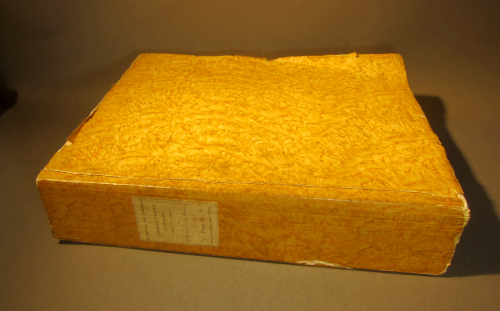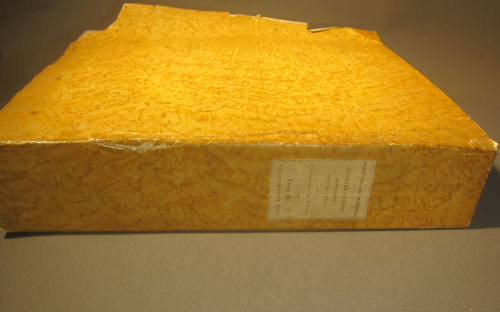CURIE, Pierre and Jean-Jacques Curie, “Développement, par pression, de l’électricité polaire dans les cristaux hémièdres à faces inclinées” and “Sur l’électricité polaire dans les cristaux hémièdres à faces inclinées” in Comptes rendus hebdomadaires des séances de l’Académie des sciences, 1880, vol 91, pp. 294–295 and 383-386. In the original (very thin) wrappers for this large volume, complete with the original paper spine label. Lovely copy. Partially unopened. Fine condition. $750.00
“Microphones, quartz watches, and inkjet printers all rely on an unusual phenomenon known as the piezoelectric effect found in various crystals, ceramics, and even bone. It was discovered by none other than French physicist Pierre Curie, working with his older brother Jacques, who found that putting pressure on these materials created electricity...”--APS News, march 2014, vol 23 #3.
 “His first important scientific collaboration was with his older brother, Jacques. By the time Pierre was 21 and Jacques 24, the brothers had discovered the piezoelectric effect (from the Greek word meaning “to press”). The Curie brothers had found that when pressure is applied to certain crystals, they generate electrical voltage. Reciprocally, when placed in an electric field these same crystals become compressed. Recognizing the connection between the two phenomena helped Pierre to develop pioneering ideas about the fundamental role of symmetry in the laws of physics.”--American Institute of Physics site, history of physics, “Pierre Curie”.
“His first important scientific collaboration was with his older brother, Jacques. By the time Pierre was 21 and Jacques 24, the brothers had discovered the piezoelectric effect (from the Greek word meaning “to press”). The Curie brothers had found that when pressure is applied to certain crystals, they generate electrical voltage. Reciprocally, when placed in an electric field these same crystals become compressed. Recognizing the connection between the two phenomena helped Pierre to develop pioneering ideas about the fundamental role of symmetry in the laws of physics.”--American Institute of Physics site, history of physics, “Pierre Curie”.
“Piezoelectricity is an electric charge that is produced by many crystals and some ceramics and other materials when they are compressed. Materials that create piezoelectricity also exhibit the “reverse piezoelectric effect,” a change in dimension when an electric potential is applied. Piezoelectricity and the reverse piezoelectric effect have a wide range of applications from the scanning probe microscope to the ignition of propane barbecues.' Wenner, History of Physics.
“The first experimental demonstration of a connection between macroscopic piezoelectric phenomena and crystallographic structure was published in 1880 by Pierre and Jacques Curie. Their experiment consisted of a conclusive measurement of surface charges appearing on specially prepared crystals (tourmaline, quartz, topaz, cane sugar and Rochelle salt among them) which were subjected to mechanical stress. These results were a credit to the Curies' imagination and perseverance, considering that they were obtained with nothing more than tinfoil, glue, wire, magnets and a jeweler's saw.
“In the scientific circles of the day, this effect was considered quite a "discovery," and was quickly dubbed as "piezoelectricity" in order to distinguish it from other areas of scientific phenomenological experience such as "contact electricity" (friction generated static electricity) and "pyroelectricity" (electricity generated from crystals by heating).”--”The History of Piezoelectricity, from Discovery & Insights to the Search for High Volume Piezoelectric Markets”, by Piezo dot Com.
See also: KATZIR S. “The Discovery of the Piezoelectric Effect” in Katzir (eds) The Beginnnings of Piezoelectricity, Boston Studies in the Philosophy of Science, vol 246





Comments